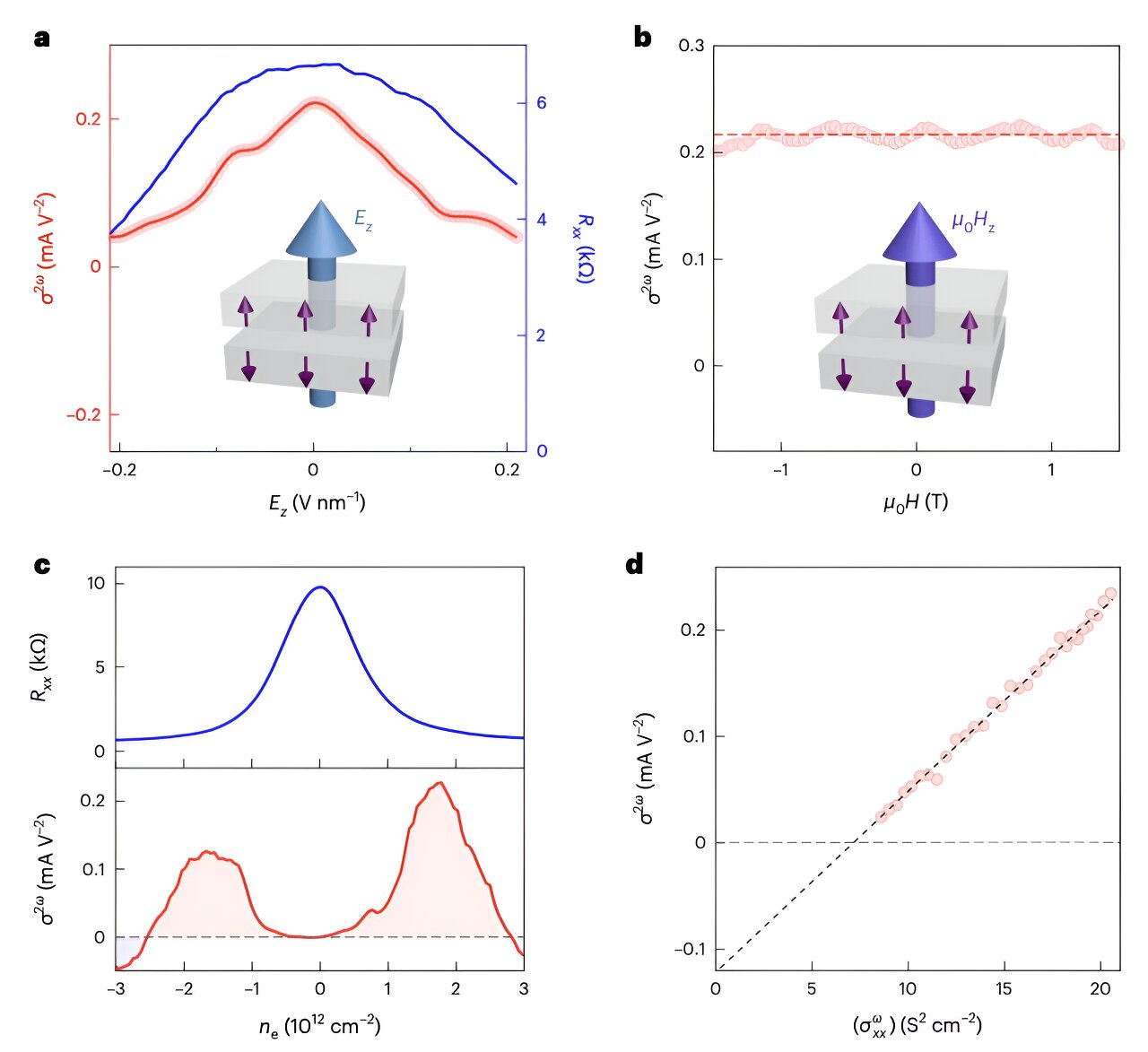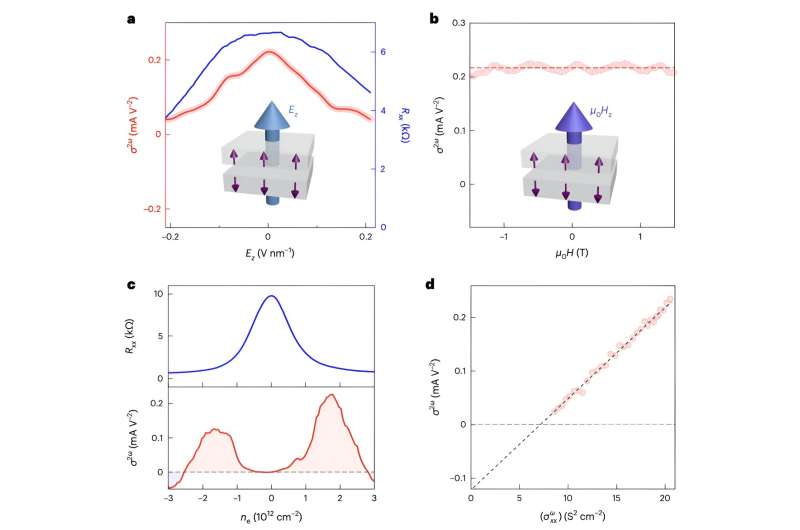

Antiferromagnets are materials in which the magnetic moments of neighboring atoms are aligned in an alternating pattern, resulting in no net macroscopic magnetism. These materials have interesting properties that could be favorable for the development of spintronic and electronic devices.
Researchers at Harvard University recently observed an antiferromagnetic diode effect in even-layered MnBi2Te4, an antiferromagnetic material characterized by a centrosymmetric crystal that does not exhibit directional charge separation. The effect they observed could be leveraged to develop various technologies, including in-plane field effect transistors and microwave energy harvesting devices.
The research is published in the journal Nature Electronics.
The diode effect, which has now been observed in numerous materials, entails the flow of electrical current in a single direction within a device. Materials exhibiting this effect have been used to develop various devices, including radio receivers, digital circuits, temperature sensors and microwave circuits.
Recently, some researchers observed a superconducting diode effect in conductive materials with a crystal structure that lacks a center of symmetry, also known as non-centrosymmetric polar conductors. Building on their observations, the team at Harvard University set out to probe the existence of a similar effect in the antiferromagnetic topological insulator MnBi2Te4.
“Non-centrosymmetric polar conductors are intrinsic diodes that could be of use in the development of nonlinear applications,” Anyuan Gao, Shao-Wen Chen and their colleagues wrote in their paper. “Such systems have recently been extended to non-centrosymmetric superconductors, and the superconducting diode effect has been observed. We report an antiferromagnetic diode effect in a centrosymmetric crystal without directional charge separation.”
The researchers fabricated devices using even-layered MnBi2Te4 with two different electrode configurations. Some of these devices had Hall bar electrodes (i.e., longitudinal electrodes that pass current and transverse electrodes used to measure the Hall effect), while the others had radially distributed electrodes (i.e., arranged in a circular pattern around a central point).
The researchers observed an antiferromagnetic diode effect characterized by nonlinear transport in both types of devices. Subsequently, they collected various measurements to confirm that what they had observed was, in fact, an antiferromagnetic diode effect.
To study the properties of even-layered MnBi2Te4 and unveil the antiferromagnetic diode effect, the team used various techniques. These included a spatially resolved optical method and techniques to collect electrical sum frequency generation (SFG) measurements.
“We observed large second-harmonic transport in a nonlinear electronic device enabled by the compensated antiferromagnetic state of even-layered MnBi2Te4,” wrote Gao, Chen and their colleagues.
“We show that this antiferromagnetic diode effect can be used to create in-plane field-effect transistors and microwave-energy-harvesting devices. We also show that electrical sum-frequency generation can be used as a tool to detect nonlinear responses in quantum materials.”
In their paper, the authors highlight the potential of the antiferromagnetic diode effect they observed for developing antiferromagnetic logic circuits, microwave harvesters and spintronic devices. Their work could soon pave the way for additional studies exploring this effect and how it could be used to fabricate new and highly performing devices.
More information:
Anyuan Gao et al, An antiferromagnetic diode effect in even-layered MnBi2Te4, Nature Electronics (2024). DOI: 10.1038/s41928-024-01219-8.
© 2024 Science X Network
Citation:
Researchers observe an antiferromagnetic diode effect in even-layered MnBi₂Te₄ (2024, September 22)
retrieved 22 September 2024
from https://phys.org/news/2024-09-antiferromagnetic-diode-effect-layered-mnbite.html
This document is subject to copyright. Apart from any fair dealing for the purpose of private study or research, no
part may be reproduced without the written permission. The content is provided for information purposes only.